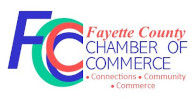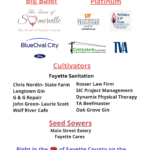Hello, my name is Clint Cox. I’m a native son of Fayette County and the owner and head coach of Penance Gym in Oakland. As such I care about the health and wellbeing of the community around me and I’ve been fortunate enough to be asked to contribute information on health and fitness, a topic where many of us are often misled. My goal is to provide practical, applicable information that helps you improve how you live and feel each day, without overwhelming you. I’m not here to demonize carbs or promote extreme diets; instead, I want to offer tools and knowledge that genuinely benefit our community. If you have any questions or topic requests, please feel free to reach out to me directly at Clint@PenanceGym.com.

Today’s Topic: How to Eat Healthy Without Breaking the Bank
I am going to start off by stating that I am not here to give nutritional advice, just how to eat healthier (and feel better) while optimizing your grocery budget. As a small business owner and father of two, I intimately understand the need to work within a budget, so I know firsthand how challenging it can be to balance healthy eating with financial constraints.
There’s a commonly held belief that eating healthier means spending more money at the grocery store, largely due to the marketing strategies of food companies. Walking through the grocery store, you’ll see labels touting terms like “organic,” “cage-free,” and “non-GMO,” which are meant to imply superior quality. These buzzwords often come with a drastically higher price tag, leading us to believe that higher prices equate to better nutrition. However, these labels don’t necessarily guarantee improved quality or better health and can strain your budget without providing real benefits. The marketing industry plays on our desires to make better choices, often creating unnecessary confusion and stress around healthy eating.
My family has found that focusing on minimal ingredients is a much more cost-effective and genuinely healthier approach. For example, relatively recently, we let the weekend get away from us and were looking for an inexpensive and quick meal that we could throw together. I had stopped at Kroger on our way home and was comparing spaghetti noodles. I could buy the “whole grain, high protein” noodles for $9 a box (with endless ingredients, some I could not pronounce) or the Barilla noodles for $2 with only 3 ingredients. This was actually the transaction that caused me to realize that we are being misled by the marketing of the food industry.
Another example is our switch from overly processed and expensive protein bars to simple whole foods like boiled eggs. Obviously, grabbing a dessert-flavored protein bar from the shelf is more convenient, but you pay for convenience in dollars now and health later. Initially, we too were drawn to the convenience and health claims of protein bars. However, we soon realized that boiled eggs were not only more nutritious but also significantly cheaper—and provide high-quality protein, support gut health, and reduce bloating compared to the highly processed ingredients often found in protein bars.You don’t need to chase after every trendy label to eat well. Instead, look for foods with minimal ingredients. No matter your nutritional goals, choosing whole foods over ultra-processed, nutrient-deficient options is always a better choice. The convenience of fast food may be tempting, but it comes at the cost of your health.
Practical Tips for Affordable Healthy Eating
● Read Labels Wisely: And know where to look on the label—focus on the ingredient list rather than the marketing claims. Choose products with fewer, recognizable ingredients. ● Shop Smart: Look for discounts and specials on fruits and meats. Buying in bulk can also save money, especially for staples like meats. ● Cook at Home: Preparing meals at home is usually cheaper and healthier than eating out. It also gives you full control over the ingredients. ● Meal Planning: This is a big one—plan your meals for the week and create a shopping list. This helps avoid impulse purchases and ensures you have everything you need for balanced meals. ● Buy Seasonal Produce: Seasonal fruits are often less expensive and more nutritious than out-of-season produce.
Budget-Friendly Ideas
Here are a few simple, healthy, and affordable ideas: ● Trail Mix: Mix nuts, dried fruits, and a bit of dark chocolate for a quick, nutritious snack. ● Baked Chicken and Vegetables: Season chicken breasts and bake with your favorite vegetables. Serve with a side of fresh fruit. ● Simple Meat and Fruit Salad: Combine grilled meat slices with a variety of fresh fruits. ● Boiled Eggs: Boil a batch of eggs for a convenient, protein-packed snack or addition to salads and meals.
Different Approaches to Healthy Eating: Finding Common Ground
When it comes to healthy eating, opinions vary—some prefer low-carb diets, others focus on plant-based eating, and many advocate for a balanced approach. Despite these differences, nearly everyone agrees that nutrient-dense whole foods—like fresh fruits, vegetables, quality meats, and healthy fats—are far superior to fast food and overly processed items. To simplify your choices, shop the perimeter of the grocery store, where you’ll find minimally processed, nutrient-rich foods that support both your health and your wallet. Healthy eating doesn’t have to be expensive or complicated. By making smarter choices and avoiding marketing traps, you’re investing in better health, increased energy, and long-term savings.
*Editor’s note: Penance Gym is a member of the Fayette County Chamber and is a great example of how a business can contribute to our community in a variety of ways. If you have an idea you’d like to share that improves our community and benefits the residents who live here, reach out to me at karri@fayettecountychamber.com





